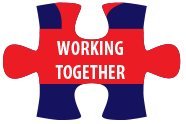![]()
Project plan for a worldwide strategy to combat human trafficking
Phase One (Completed)
The project launched with a three-day working Summit comprising collaborative workshops and best practice information sharing sessions, which developed a framework for the design and implementation of the International Resource and Coordination Centre.
Through motivated participation, international law enforcement together with government and non-governmental agencies (NGOs), victim support groups, the legal profession, technologists and financial planners from around the world began the process of defining this global resource centre which will facilitate the free sharing of information and resources, to combat human trafficking at an international level.
The event also galvanised the development of a broad-based, multi-pronged educational and operational approach to country/community strategies. Delegates from different countries shared needs and identified opportunities geared towards tailoring responses appropriate to their respective home territories.
Phase Two
Phase Two is already underway and centres around the five committed working teams of delegates and speakers which were formed after the 2013 Summit. Focused on plugging gaps identified during workshop sessions, they are tasked with developing action plans and resource requirements for the Centre’s five operational cornerstones: Funding; Communications; Management Information; and Structure, Process and Operations.
These Gap Action Teams (GATs) are working collaboratively, keeping the overall strategic planning team updated.
All five working groups will present their proposed action plans following the official opening of the 2014 Summit. Delegates will then break into their chosen working group/s to begin tackling the gaps and challenges identified to ensure that the Centre will meet the varying needs and expectations of those on the front line in the fight against human trafficking. Working together, we will collectively identify and deliver the strategy and critical next steps for Phase III of the Resource Centre’s development – practical implementation.
Phase Three
Phase Three centres around program delivery.
Training, and further opportunities for information exchange, can be rolled out at appropriate venues identified during the two Summits.
In addition, technological solutions can be scoped for final development with technology partners while work can begin on the design and specifications for the planned 24/7 operational centre.
Funding and staffing implications will shape the development of the centre, which will commence operations once location, architecture, funding, staffing and resourcing requirements have been met.
A governing body will be set up to shape policies and decision-making procedures – its memebrs rooted in sound governance, structural integrity and robust operating procedures.



